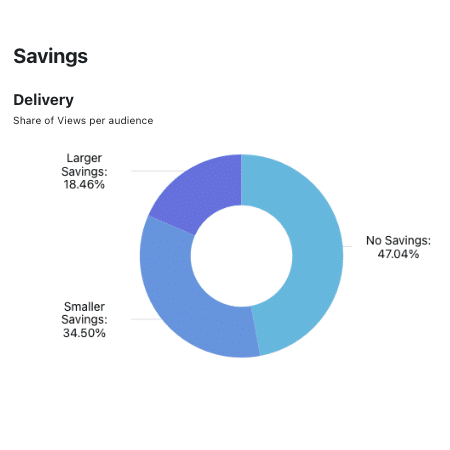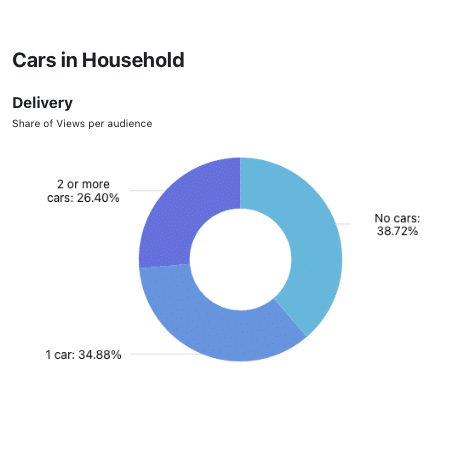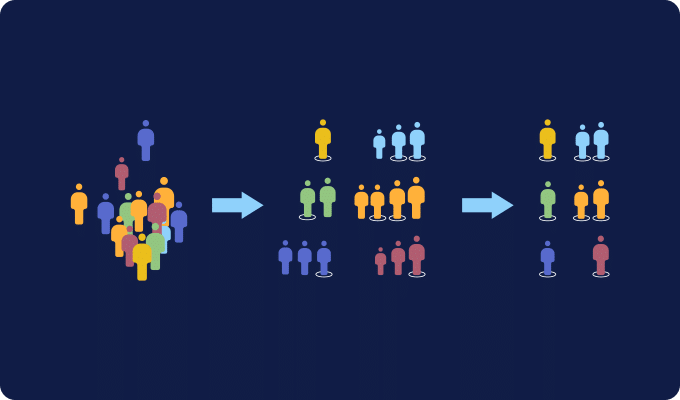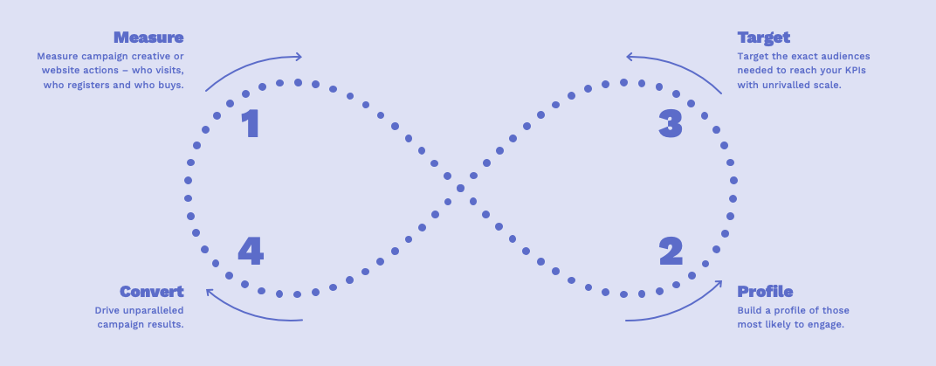The Meaning of Measurement in Digital Advertising
Measurement is one of the defining features of digital advertising. If we deliver it, we can measure it. This is digital’s key strength but also its key weakness—we have so many delivery metrics available we lost sight of the bigger picture. We measure what can be measured easily. And if we can measure it, the secrets of the universe will reveal themselves to us.
Discussions about measurement often reveal a surprising gap, however: audience measurement—the foundation of effective campaigns—is frequently overlooked or misunderstood. While clicks, conversions, and attribution models dominate the conversation, too little attention is given to understanding who actually sees and engages with ads.

For instance, an agency executive might define measurement as tracking the number of clicks from an ad campaign, while a performance marketer might focus on ROI. But without audience measurement, every other form of measurement is working in the dark. If you don’t know who you’re reaching, how can you plan effectively? How can you optimize results? How can you evaluate success beyond surface-level metrics?
Measurement isn’t just about results—it’s about audiences. And understanding them is the key to better planning, optimization, and long-term business impact.
What is Audience Measurement?
Before diving into how it influences campaign success, it’s important to define audience measurement—a critical but often overlooked aspect of digital advertising.
Audience measurement is the process of understanding who is engaging with a brand, who sees its ads, and who visits a home page and who takes action. It provides insights into audience composition ensuring that campaigns are built on real-world data rather than assumptions.
Unlike attribution, which focuses on linking outcomes to ad spend, audience measurement plays a role at every stage of a campaign. It informs planning by identifying the right audience, optimization by refining targeting based on engagement, and evaluation by measuring whether the campaign reached and influenced the intended audience. In fact, in a recent campaign for an outdoor music festival called Electric Castle, the team used early audience insights to adjust their strategy mid-flight—redirecting spend toward segments most likely to convert. That shift, driven by measurement rather than assumption, helped boost performance and proved the value of starting with audience data. Read the case study.
By prioritizing audience measurement, advertisers gain a clearer picture of not just what worked, but who it worked for—and why that matters for future strategy.
Measurement is More Than Attribution
When you dig deeper into how people use the term measurement, you’ll notice that most often it is treated as a synonym of attribution — i.e., determining how specific ads lead to specific outcomes such as clicks, conversions, or sales. This isn’t entirely surprising. Both measurement and attribution seek to assess a campaign’s effectiveness, so a certain amount of overlap is to be expected.
How Audience Measurement Powers Smarter Campaigns
Audience measurement is not just a tool for reporting results—it’s a strategic asset that shapes every phase of a campaign. By understanding who engages with ads, how they respond, and what influences their behavior, advertisers can move beyond assumptions and make informed decisions. Whether in planning, optimization, or evaluation, audience insights ensure that campaigns reach the right people with the right message at the right time.
- Audience Discovery: Start with the Right Profile
The first step in any campaign isn’t just defining who to target—it’s understanding who is already engaging with the brand and using that insight to shape strategy. Audience measurement provides a data-driven foundation, revealing the characteristics of those interacting with ads and website content before campaign goals are set.Take an automotive brand launching a campaign to promote a new EV model. Instead of assuming a broad audience—such as all car buyers or 10 million potential EV consumers—audience measurement can reveal who is actually engaging with early campaign assets. Are they households with high disposable income? Multi-car owners? Tech enthusiasts?For one brand, identifying these traits early led to a key pivot: shifting the call-to-action from generic awareness to encouraging test drive bookings among high-intent segments. By profiling the audience before setting campaign objectives, brands can move beyond assumptions, tailor messaging to the right consumers, and allocate media spend where it drives real outcomes.This approach prevents overpromising and ensures that campaigns are built on real-world audience data rather than guesswork. A well-defined audience profile not only enhances targeting but also guides creative direction, ensuring that messaging aligns with the motivations and characteristics of the most engaged consumers. - Refining Strategy Through Audience Insights: Optimization
Measurement doesn’t stop once a campaign is live—it’s an ongoing process that reveals which audience segments engage, convert, or disengage. Audience measurement enables advertisers to continuously refine targeting, messaging, and media allocation based on real-time engagement data.Back to the award-winning case for the music festival, Electric Castle, as an example. Using Digiseg’s audience measurement, the media agency identified who was buying tickets and when. Early data showed that affluent, highly-educated attendees were purchasing first, while younger, less-affluent buyers were waiting until closer to the event. This insight allowed the agency to adapt its strategy mid-campaign.- In the early phase, highly-educated audiences were underrepresented, so Reddit was added as a channel to improve reach.
- As the event date approached, audience measurement indicated a shift—younger buyers became more active, prompting a move to Snapchat to connect with last-minute ticket purchasers.
By continuously analyzing audience engagement, the campaign stayed dynamic, ensuring the right message reached the right people at the right time.
- Measuring the Impact of Audience Engagement
Evaluating a campaign’s success requires more than counting conversions—it demands an understanding of who was reached, how they engaged, and whether they matched the intended audience.Audience measurement in the evaluation phase moves beyond surface-level performance metrics like CTR to reveal whether the campaign actually connected with the right consumers.For example, an EV campaign might generate millions of impressions, but did it actually reach tech-savvy, high-income households likely to buy? Did it bring in new audience segments previously overlooked? These insights don’t just assess past performance—they provide a blueprint for future campaign refinement, website improvements, and even product positioning.Without audience measurement, evaluation relies on incomplete data, making it difficult to understand what truly drove success—or where opportunities were missed.

The Bigger Picture: Why Audience Measurement is Essential
Measurement in digital advertising isn’t just about tracking clicks or attributing sales—it’s about understanding who is engaging and why. Without audience measurement, campaigns rely on assumptions, making every stage—planning, optimization, and evaluation—less effective.
By using audience measurement to profile the right consumers, refine targeting based on real-time engagement, and assess whether the campaign truly reached the intended audience, advertisers gain insights that go beyond vanity metrics. These insights not only improve current performance but also shape smarter strategies for the future.
If you’re still measuring outcomes without measuring audiences, you’re only seeing half the picture. Start with the who—because when you know who you’re reaching, everything else makes more sense.
Explore how audience measurement can sharpen your next campaign. Contact our Customer Success Director, Jakub Skwarski – js@digiseg.io


